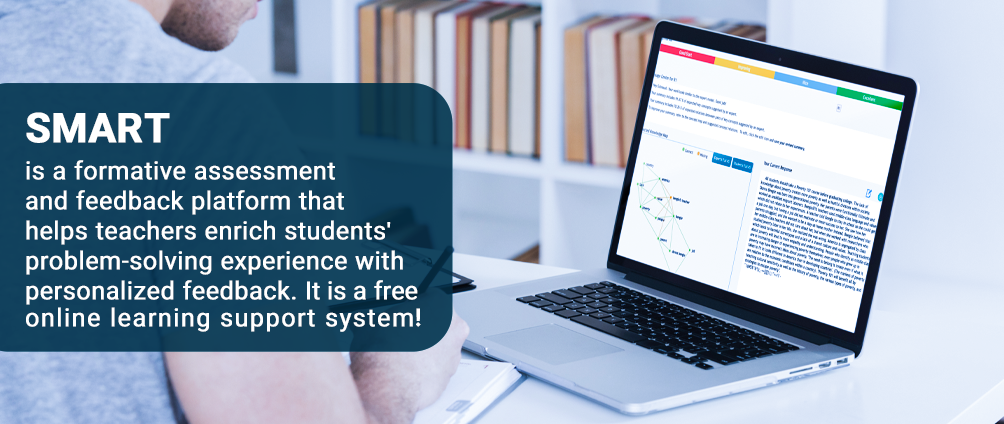
The Student Mental Model Analyzer for Research and Teaching (SMART) technology helps learners write high quality summaries, which enables them to comprehend the materials they need for meaningful class discussion. In SMART, learners read a text and then write a summary of that text. Summaries serve as re-represented learners' mental models of the text. SMART is based on the premise that a learner's deep knowledge of a particular complex reading, or a problem situation can be developed and measured through writing a high-quality description of a text or a complex problem. SMART accurately diagnose learners' comprehension issues and then deliver the feedback through multiple modalities.
SMART is a means to reinforce instruction. In most learner-centered environments such as inquiry-based learning, problem-based learning, and flipped classrooms, learners are expected to equip themselves with sufficient understanding of a learning topic or a problem situation in preparation for their engagement in problem-centered learning activities. For example, in flipped classrooms, SMART can deliver online learning materials and enable learners to prepare proper learner understandings of the topic in preparation of active learning in classrooms.

Instructors
Step 1: Make your classrooms
Create your SMART class in a minute. It can either be a virtual class or one that is paired with your face-to-face classroom.
Step 2: Create assignments
You can make a series of assignments per project with no limitation. The format of the problem is entirely up to you. You can have videos, images, and hyperlinks in your problem descriptions.
Step 3: Assessment and feedback
SMART automatically analyzes learners’ progressions. You can monitor both class-level and individual-level changes. You can provide personalized learning support on top of automatic formative feedback with the SMART system.
For more information on how to use SMART, watch this 15-minute video.
Learners
SMART is easy for learners to use. Just following some steps leads you to get SMART feedback:
Step 1: Create your SMART account.
Step 2: Add your class using the “class ID” your instructor shares with you.
Step 3: Create your written response.
Step 4: Get feedback on your response.
Step 5: Revise your response to improve your deep understanding of the text.
For more information on how to use SMART, watch this 3-minute video.
